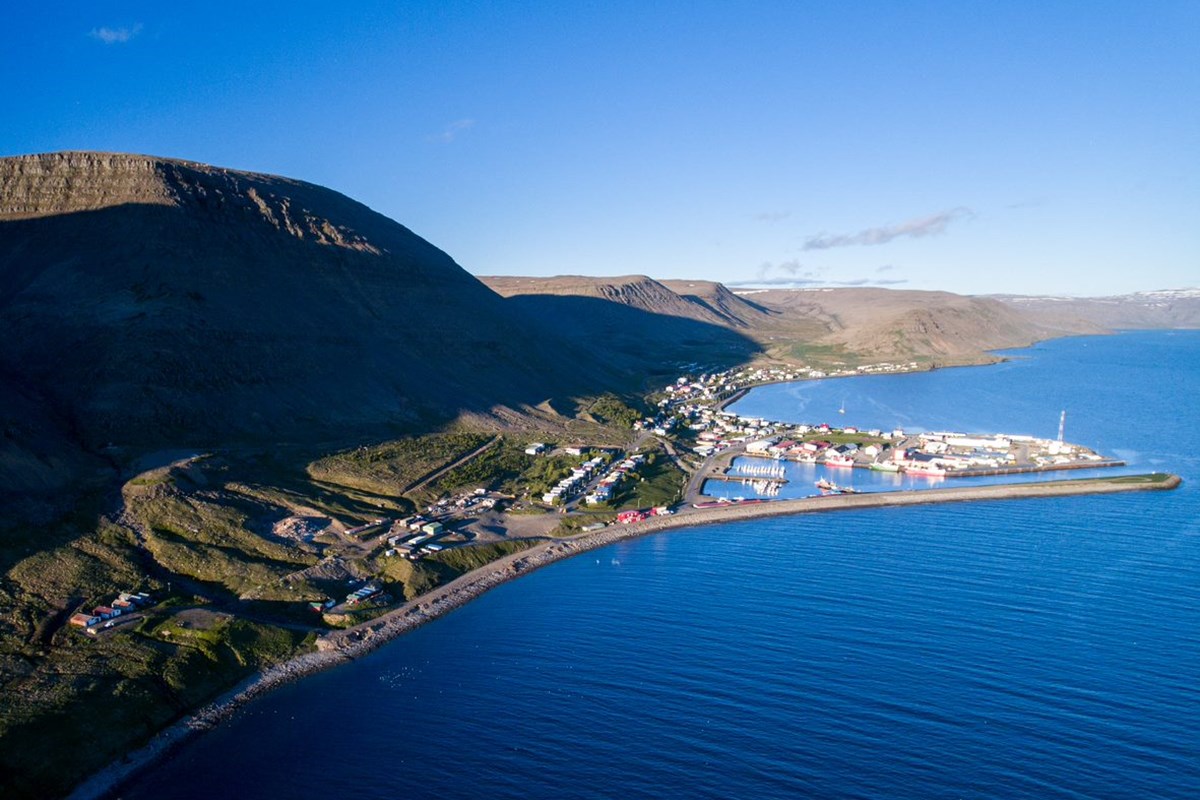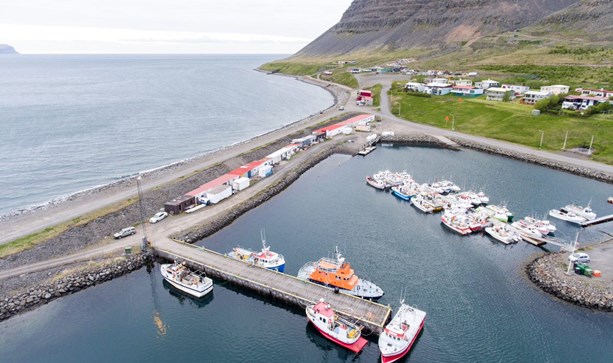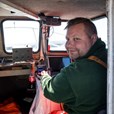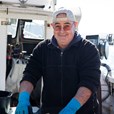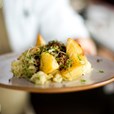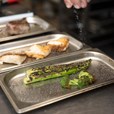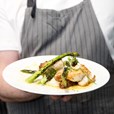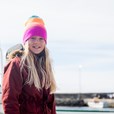Portraits of the Village
The Portraits of the Village is a concept aimed at sharing stories of the people who make up the Icelandic fishing village. It is an ongoing project – piece by piece, we plan to bring you the story of all the different people and characters you will encounter in a traditional fishing village in Iceland. It’s about the people who make up the different parts of the community, creating a place where seafood remains an important part of everyday life.
We will be visiting villages from around Iceland, meeting people such as local chefs, factory workers, fishermen, families and everything in between. We started in the Icelandic Westfjords, a place famous for its remoteness and pristine beauty as well as it’s connection to the Atlantic Ocean and Greenlandic Sea. As the project continues, we will slowly make our way around the country, capturing the different seasons as well as the people who make up the communities in fishing villages around Iceland.
-
The Fisherman’s family
As a nation surrounded by the Atlantic ocean, seamanship is written into the lives of the Icelanders, it is in their blood. The ocean waters are cold, fresh and clean, and demanding. Skilled adaptation and strong performance are necessary traits for the seamen to do their job successfully. This kind of job leaves a lasting impact.However, it is not only the sailor that is shaped by the sea, it’s the entire community, including the families of the fishermen. It is no secret that life at sea can be dangerous, and in earlier times, when sailors did not have the conveniences of modern-day society, their families would await news from their loved ones out at sea. Today, fishing in Iceland is safer than ever, largely due to improved safety measures that havegreatly benefitted the Icelandic society. This is especially important to the families and friends of the fishermen who greet their loved ones upon return - and together, they celebrate the fruit of the ocean.
-
The daughter of a fisherman
Being a daughter of a fisherman in Iceland means being exposed to life at sea from an early age. It means having a rolemodel who embraces the ocean and the lifestyle that follows. It often means going for days without seeing your father, not knowing where he is nor when he will return. It also means looking out to sea in order to better understand and learning the craft of her fathers profession. However, being a daugther of a fisherman also means growing up in an Icelandic fishing village, surrounded by other children whose parents’ work, more often than not, is also connected to the sea. In return, this leads to a unity amongst the future generation, tying them closer together in their appreciation of the ocean. Having a father working at sea might mean that sometimes there is an empty seat at the dinner table – but it also means that once he returns, there will be fish on the menu. ☺
-
The New Local
Even if the village functions as a tightly knit community, it remains surprisingly dynamic, with a steady influx of foreigners and visitors, many of whom fall in love with the life it offers, the beautiful landscape, culture and community. It is safe to say that these people find themselves becoming “new locals”, often contributing to a more vibrant life in the village as well as a cultural exchange. They share our passion for the ocean.
Take for example Joao-Manuel, also known as Jóí in the village, who arrived to Iceland in 1990. He first arrived to work in the seafood industry. Before that, he had worked as a fisherman for 12 years in Portugal and elsewhere – and finally had decided he wanted to try living in Iceland, home to some of the best fishing grounds in the world. He knew everything about the types of fish and seafood caught in Iceland – and he even had a special trick up his sleeve – he could fillet fish like no-one else in Iceland. After spending some time in the capital region, he quickly became drawn to the village – with its rough and untamed connection to the Atlantic Ocean, as well as the peacefulness and quality of life. Today, Jóí has lived for almost 30 years in Iceland - and still returns to Portugal once in a while, mainly to visit his family as well as taste real Portuguese Bacalao (made with salted cod from Iceland, of course) – but his home continues to be the fishing Village in Iceland.
Jóí is a good example of the new locals who share our passion for the ocean – and find a new home in a place that offers a high living standard and has an abundance of seafood.
-
The Mayor
The seafood industry is the beating heart of the village – and most jobs and activities relate to the ocean in one way or another. To find out just how important it is, we spoke to the Mayor of a small Icelandic fishing village located in a remote part of the country. She explains “without the seafood industry and products such as salted cod, there wouldn’t be a village. All workplaces are somehow connected to the industry, ranging from the local carpenter to the local store and bank. Even tourism and local restaurants are closely connected to the industry” She further elaborates “for years, the number of inhabitants has been steadily declining but due to increased value creation in the seafood industry, people have now started moving back to the village”. She explains that the village is filled with optimism and seafood and tourism are paving the way for growth.
When asked about why there is no fish-store in the city, she explains “there is no need for a fish-store; we are such a small community that everyone has access to great fish at any time.” The Mayor also told us that she herself enjoys fish on a regular basis “my husband is a sailor and we enjoy home-caught fish 2-3 times per week. I have always loved cod. I remember when I was a child, I would always demand salted cod for my birthday. Nowadays, I really enjoy the Southern European way of cooking the salted cod, combining it with tomatoes, raisins, garlic and chili – to me, it’s the taste of a holiday!”.
-
The Chef
Fish has been one of the main ingredients in Icelandic cuisine since early settlement in 874. It has been key to the survival of the Icelanders, living on a harsh volcanic island surrounded by the deep blue. It helps explain the distribution of the Icelandic population, thinly scattered across the coastline of the country - and with life being so deeply connected to the ocean, it is not unusual that a typical dinner consists of fish (even up to 4-5 times per week in some families). The fish is often cooked in a traditional Icelandic manner; pan-fried in batter or boiled and served with local potatoes. However, the way in which the fish is prepared is undergoing a small revolution in Iceland, where traditional dishes such as salted cod are gaining new life, prepared in a New Nordic Cuisine manner, emphasising the Icelandic origin, but adding modern approaches to fine-dining. The presence of great restaurants in local fishing villages enables chefs to work closely with the manufacturing base, continuously pushing the limits of quality, flavour and freshness just a little bit further. In a remote fishing village, this is entirely new to the local population – and the local chef is contributing a novel and more vibrant lifestyle with fine cuisine on the menu in a small fishing village.

